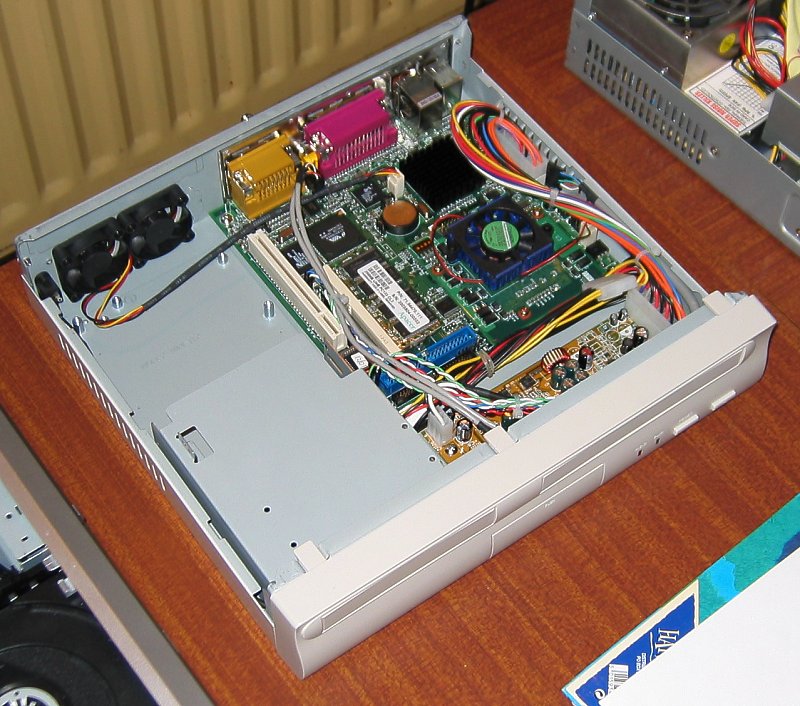Yes, if you are reading this, then you are looking for more information on the microA1. Which from now on in this article we will just call the μA1. This little motherboard is very exciting news for most Amiga users. Its uses are limited to your imagination, what is better for an Amiga user? With its small size of just 170mm x 170mm (6.6929"x6.6929") it can be installed into just about any configuration.

With the board being of the mini-ITX standard, it will fit into standard micro ITX cases, such as x86 based systems fit into. This gives the end user almost limitless possibilities when it comes to cases to choose from.

If a small, powerful system is what you are looking for (without having to lose desk space) then these are definitely systems worth looking into.

Specifications:
- Mini-ITX MicroA1 (170mmx170mm)or(6.6929"x6.6929")
- CPU
- The μA1-C, just like the AmigaOne XE system, it has a MagArray 300 connector for PPC processors made by IBM and Motorola and will handle G3/G4 CPU's up to their current clocking limits - Memory
- PC133MHz SODIMM slot can take up to 2GB. - Legacy Peripherals
- Parallel 1x EPP/ECP,
- 2x Serial (on internal headers)
- JoyStick/Midi port
- PS2 kb and PS2 mouse ports - Integrated Peripherals
- 2x 1.1 USB on the motherboard rear ITX I/O panel
- 2 more on headers (using a front bay connecter)
- Ethernet: 10/100 with 3COM 920C controller
- Sound: Cmedia CMI8738 6 ch controller with 3.5mm mic, aux and speaker jacks
- UDMA 100 2 channel interface (VIA686B)
1x 44 way (2.5" IDE)
1x 40 way (Standard IDE) - PCI
- One PCI slot on board.
- With a suitable riser card, you can add up to 3 PCI slots - Graphics interface speed
- ATI Radeon 7000 AGP graphics controller on board with VGA, S-Video and composite output with 32MB of non-shared memory. - BIOS
- Uboot socketed, with OS4 enabling code - The chipsets which are used on the A1-XE are also on the mA1 including the
- North Bridge- Articia "S", which is the bridge board between the CPU, memory and PCI bus
- South Bridge- VIA 82C686B, the chip that handles the system timing, interrupts, and communications between functions
